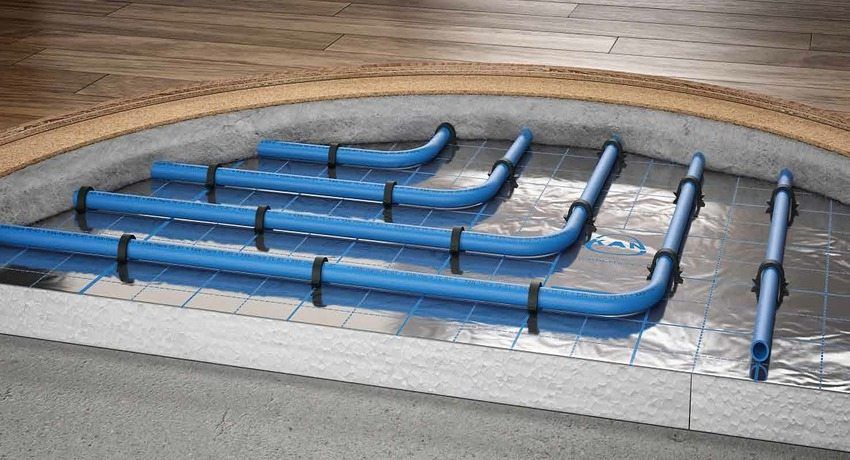Every owner wants his chickens to grow quickly, well, and carry more eggs. However, it is often forgotten that this is possible only under good living conditions of the bird, in which it will feel comfortable. That is why it is a mistake to place chickens in sheds and utility rooms. It is worth spending a little time and effort to create a suitable “house” and the result will not take long. The article will discuss how to make a winter chicken coop with your own hands on 20 chickens.

Winter chicken coop with your own hands on 20 chickens: what type of building to prefer
Some owners keep birds in the henhouse all year round, while others leave them in this courtyard building only for the summer period. First of all, decide what you will do, because understanding the temperature and the weather in general outside the hen house will be important during construction.
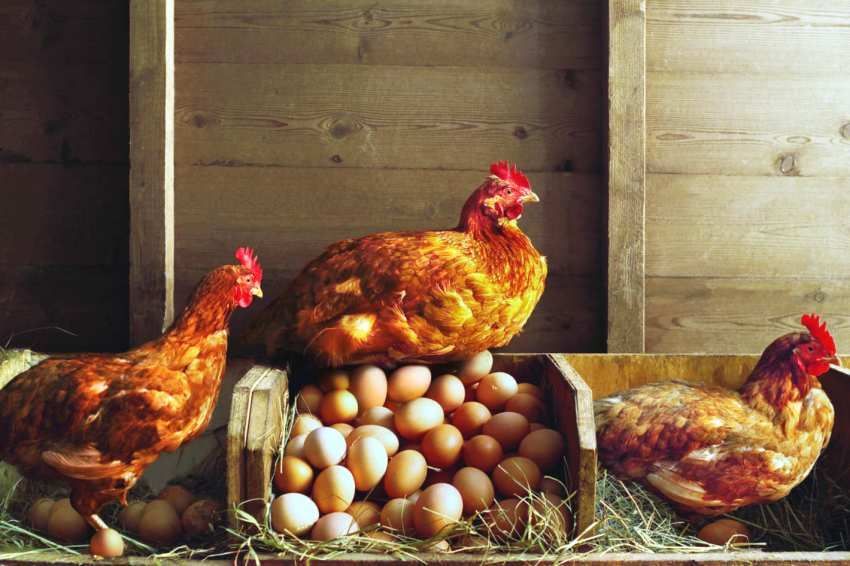
Build a warm chicken coop with your own hands
Before you start building, you should choose the type of chicken coop that best suits your goals, as well as determine the necessary materials and make a detailed plan for the future poultry house.
If you started building a winter chicken coop with your own hands, first of all take care of the insulation of the room – and then you can be sure that even in cold weather there will be fresh homemade eggs on your table.
Helpful advice! At the planning stage of construction, include a vestibule in the plan: its construction does not require much effort, but at the same time it can significantly reduce heat loss.
There are several types of buildings, and when choosing the right option, it is necessary to proceed both from your possibilities and the territory on the site that you are ready to take under the house, as well as from the comfort of the inhabitants of the chicken coop. One of the best options is a chicken coop with a courtyard – it consists of two parts and is the most convenient for birds, although it takes a little more space than ordinary hen houses.

Two parts of such a chicken coop:
- Interior
- Gated courtyard.
In this embodiment, the design of the chicken can, if necessary, sit inside or walk in the fresh air.
The foundation is the basis of any structure, which is why it is so important to immediately determine its type. First of all, it is worth carefully weighing all the pros and cons of each of the options.
Advantages and disadvantages of various types of foundation for chicken houses:
| Foundation type | Benefits | disadvantages |
| Tape | High reliability | The high cost, justified in the construction of the house, but not in the construction of the chicken coop |
| Columnar | Cheap and simple design | Lower reliability compared to tape option |
| Pile | High reliability and simplicity of construction: using modern screw piles, two people can easily cope with the construction of the foundation | Relative high cost: pile foundations are cheaper than tape ones, but more expensive than columnar ones |
The most common choice is a columnar foundation: it does not require much time and effort, while ensuring the reliability and stability of the building. We will understand how to make such a foundation on your own:
- start with the markup. To do this, take a rope and a few thin long pegs or metal rods;
- then you need to put pegs in the corners of the future structure and pull the rope. Carefully ensure that the markup is smooth. The rope should be stretched, but at the same time to move along the upper layer of the earth;
- dig a 15-20 cm hole in the marked area – it is necessary to remove the top layer of the earth;
- dig holes under the posts. Their depth should be approximately 60-70 cm, and the width should correspond to the parameters of two bricks, that is, be approximately 50-55 cm. The distance between the pits should be 1 m. The bollards should be installed along the entire perimeter of the future chicken coop;
- after completing the digging of the pits, pull another rope over the rods. It should be at a height of 20-25 cm above the ground. In order to design turned out smooth and neat, use a level;
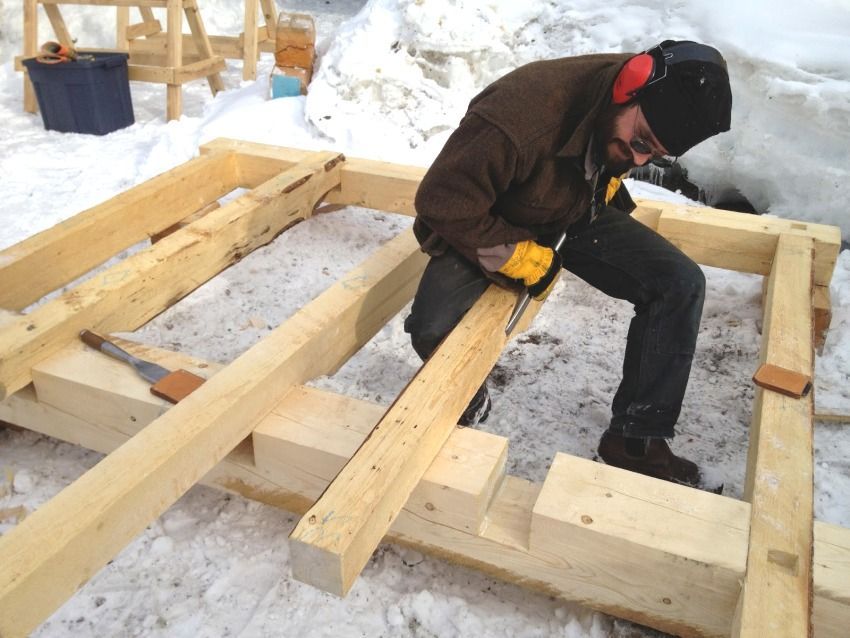
- It is necessary to put a small layer of sand on the bottom of each pit. The thickness of this layer should be 5-7 cm;
- next fill the same layer of gravel – both layers serve as a cushion for the future foundation;
- place two bricks on the bottom of the hole. Next, put the cement solution in a ratio of 1: 3;
- put two more bricks across. Repeat until the height of the bollard reaches the level of the upper rope;
- if the height of the post turned out to be insufficient, level it with cement;
- to protect the foundation from the damaging effects of moisture, its basement should be covered with gravel.
In order for the design to be comfortable and durable, it is necessary to choose the best possible materials. For the construction of the house can be used:
- foam blocks;
- shell rock;
- wood;
- brick;
- cinder blocks.
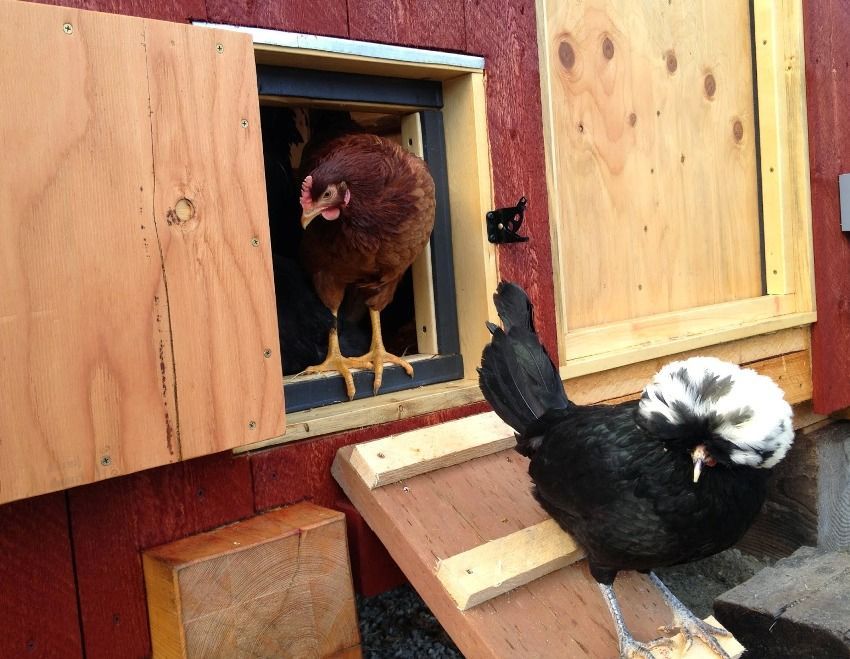
Consider the features of the most popular materials:
- Foam blocks: not the most budget, but the most comfortable option for birds.
- Brick: the most durable material, the construction of which preserves the integrity and functionality for decades.
- Wood: the most popular solution, distinguished by its economy, practicality and durability in case of proper processing of the bars. In addition, this house looks stylish and harmoniously fit into the landscape of any site.
The material for the foundation is chosen according to the following principles:
- For the thumbs under the columnar foundation any suitable material will fit. Popular options are ordinary stone or old or new brick.
- For the manufacture of strip foundations used reinforced concrete. The frame is assembled from metal reinforcement, components are also needed for the manufacture of concrete solution.
- Pile foundation is made with the help of special piles of reinforced concrete or metal. The most modern option is a screw metal piles that are easy to screw into the ground without the help of professionals.
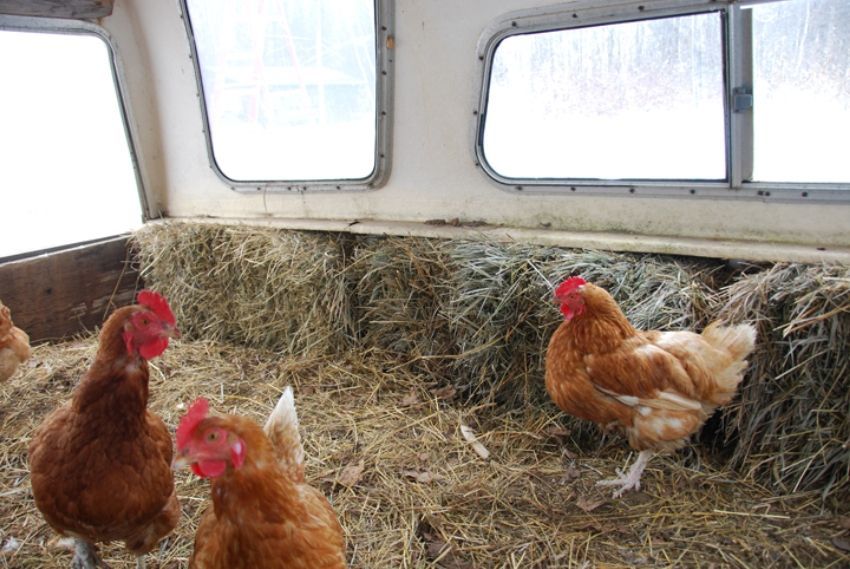
The optimal material for wall insulation is foam.
Helpful advice! When laying insulation, be sure to ensure that the foam is closed, otherwise chickens can peck material. Geese perceive the foam as food, so if your site contains these birds, take care of the closeness of insulation should be especially careful.
If the chicken coop consists of boards, do not forget to put mineral wool between the two layers.
How to heat a chicken coop in winter, if you plan to keep birds in it all year round, will be discussed below. As an additional insulation, choose expanded clay, rolled materials or coal slag.
An important part of the chicken house is the roof – the temperature inside the building will depend on its reliability. It is important that there are no gaps in the roof, and it does not leak. First of all, decide on the material suitable for roofing. In this capacity can be:
- professional flooring;
- metal tile;
- slate.
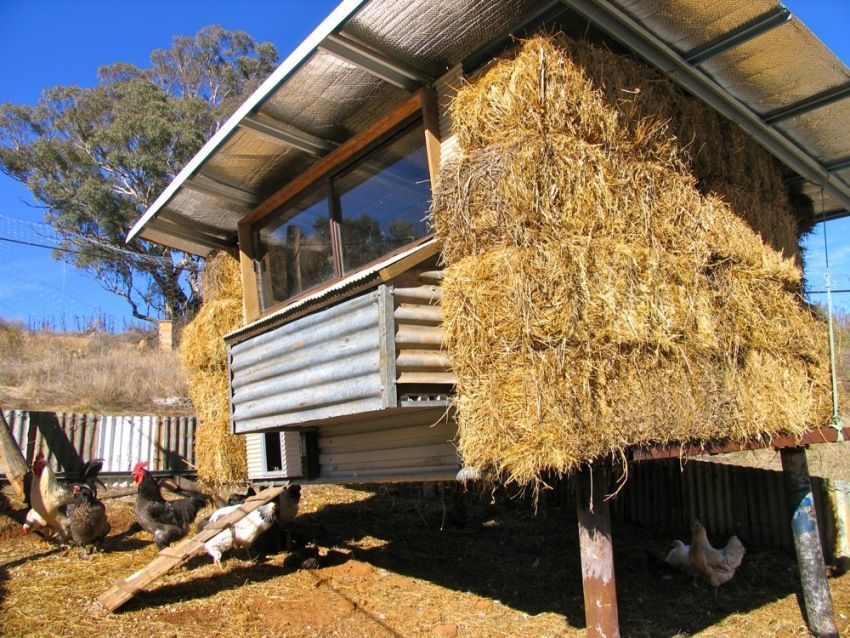
The type of material for the roof in the case of the coop does not matter much. The main purpose of the roof is to prevent the ingress of moisture inside the house, so the main task is the proper roofing to avoid leakage.
To choose the best place for a chicken coop, convenient for building and comfortable for chickens, follow the simple principles:
- in the lowlands, as a rule, it is very damp: in the spring, the earth dries out more slowly after the snow has melted, and after the rains puddles appear there. Thus, it is better to place the house on a hill – in addition, it is more convenient to walk chickens there;
- birds like peace, therefore it is worthwhile to place a chicken coop away from active recreation and sources of noise;
- the health of the birds is directly proportional to the amount of sunlight they receive, so if possible you should take care that the windows face south;
- overheating is harmful to birds, so it is worth shading windows in extreme heat;
- the hen house should be located close to the person’s dwelling so that you can regularly watch the birds;
- place the house on dry sandy soil. In the case of clay, marshy or just wet soil, it should be drained beforehand;
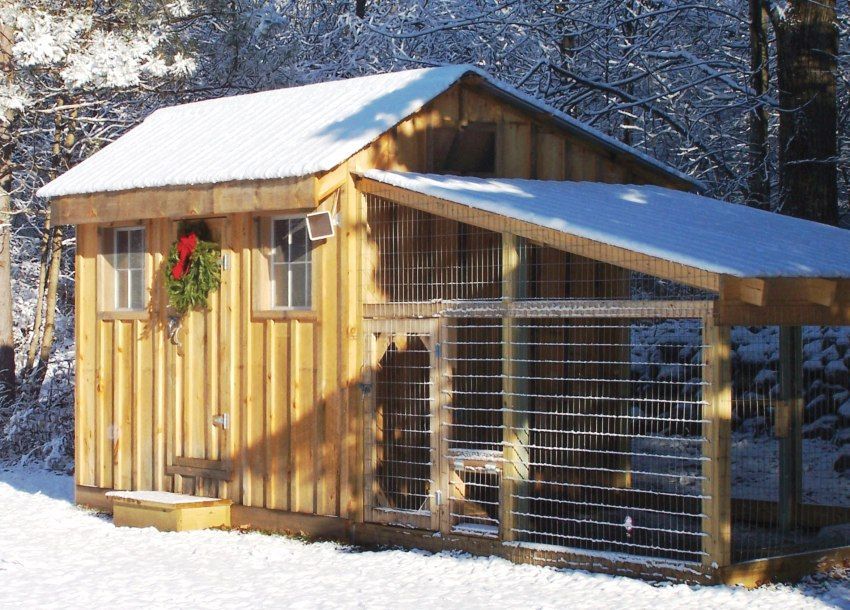
Helpful advice! Use drainage channels or pits and then falling asleep with sand. In the future, you can use drainage channels, ponds or pits for bathing chickens. An ideal place for the poultry industry – with a slope to the south-east.
- take care that the area chosen by you for the construction of the poultry house is reliably protected from cold winds – planting in the form of shrubs and trees is optimal for this;
- near the chicken house there should be a suitable walking area, where you can shelter from rain, piercing wind, scorching sun and other unpleasant weather phenomena;
- for bathing chickens is to equip a small pond.
The choice of location is one of the most important stages in the instructions on how to build a winter chicken coop, because the inappropriate place and uncomfortable conditions for birds affect their health. Birds become lethargic and painful, they rush less, problems with fertilization of eggs are also possible. As a result, the chicken coop brings less income.
Make sure that the conditions of the chickens are balanced: when the humidity is high, the chickens hunt and become lethargic, and if in the heat under the scorching sun the chickens do not have shelter in the form of trees, bushes or other sources of shade, there is a risk of dehydration threatening the death of birds.

Helpful advice! It is possible that in the future you will need an increase in the number of birds. Therefore, if possible, place the chicken coop so that, if necessary, there are still buildings next to it. Even if you have enough 20 chickens to provide eggs for the whole family, it is possible that in the future you decide to raise birds for profit.
Construction of a chicken coop for 20 chickens with their own hands: drawings
Regardless of the type of house and materials for its construction, in order to understand how to build a warm chicken coop with your own hands, it is necessary to make drawings. They must be detailed and contain all sizes. The drawing must be made in three projections.
As a result, you can easily figure out how to make a winter chicken coop for 20 chickens with your own hands: the drawings add clarity, allow you to calculate how many materials you need, and help to avoid mistakes during the construction of the house.
At the stage of creating a drawing, you must decide on the type of roof. The best choice is a gable roof with an attic – in this case, all the necessary equipment, food, etc., you can store there without cluttering living space and not taking up space in the hen house. Less practical and convenient, but having the right to life are options for a shed roof or flat roof.
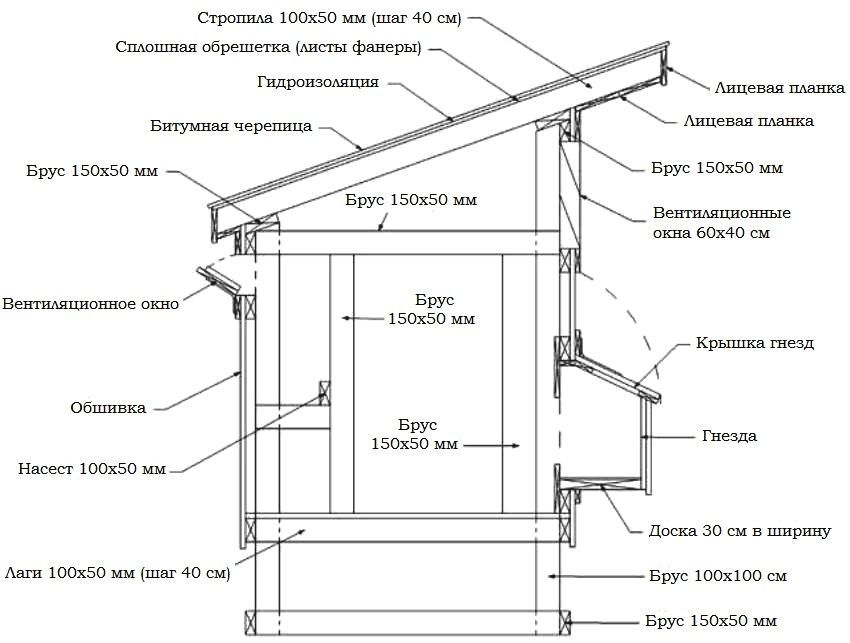
Also help to build a winter chicken coop for 20 chickens with their own hands photos, drawings and design sketches found on the Internet.
Calculation of the size of the coop for 20 chickens
On two chickens in the house should be at least 1 m? space. Also note that some place will take drinkers, feeders and other auxiliary elements. Thus, in the summer and in the winter version of the project of the chicken coop for 20 chickens should be at least 15-20 m? square

